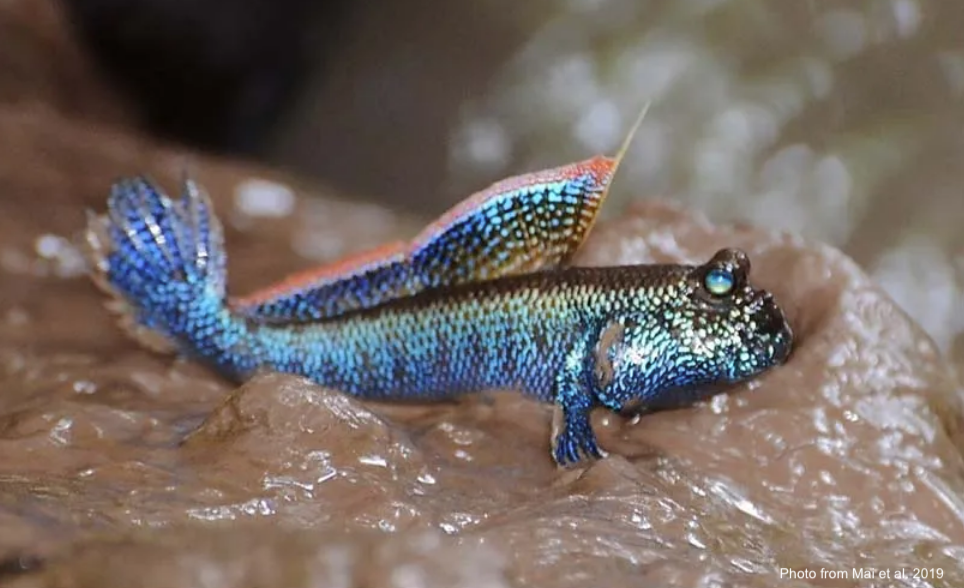Periophthalmodon septemradiatus, an amphibious goby commonly known as the mudskipper, looks a lot like an oversized tadpole. Equipped with fins and a fish-like body, this species has evolved to breathe air and even “walk” on land. In fact, it spends almost all of its time on land– activities like breeding, feeding, and defending territory all take place above the water on the mudflats of the Mekong River Delta. In areas that undergo tidal changes, these fish are most active at low tide when mudflats are exposed, and retreat into their mud burrows as the water returns. This mudskipper species has evolved to thrive in soft-bottomed saline and freshwater environments such as mangrove forests, and wetland habitats across a broad range of countries, including India, Bangladesh, Myanmar, Vietnam, Malaysia, and Indonesia.
These amphibious fish play important roles as grazers in bottom-dwelling river environments, and also serve as indicators of overall ecosystem health. The mudskipper helps regulate and balance the food chain of river-bottom communities by feeding on diatoms, algae, small crustaceans, and other intertidal worms and insects. Unfortunately, the habitat that this fish lives and feeds in tends to suffer from high levels of water pollution as a result of untreated domestic and agricultural waste. A build up of toxins (referred to as bioaccumulation) can occur in the mudskipper as a result. Although unsettling for our mud-dwelling fish friends, scientists have been able to use a literal bottom-up approach to study the effects of water pollution on river health through analysis of bioaccumulation in their bodies. In this way, the mudskipper, which is sensitive to toxic conditions, can indicate changes in the level of pollution in their habitats.
Although P. septemradiatus is currently categorized as a species of least concern by the IUCN, little is known about its global population trends. Threats vary by geographic location, but along the Mekong River, deforestation of mangrove habitats, and the degradation of riparian zones place the mud-dwelling fish at considerable risk. In places like India and Vietnam, the mudskipper faces overconsumption by local fishers and exploitative capture for the aquarium trade. A recent study found that this particular species of mudskipper has been experiencing significant changes in behavior and habitat range, and has been observed in locations farther and farther up into the freshwater reaches of the Mekong. Scientists believe that the mudskipper has begun to expand its habitat range due to the combination of evolution of the coastline, changes in food availability, and shifts in wetland habitats over time. In terms of evolution, this species may serve as a benchmark example from which we can understand the transition of other vertebrates from water to land. We have much to learn from this air-breathing fish, and should work to ensure the health of the soft-bottom river ecosystems they depend on.
This story was written by Madisyn Pyorre for an internship with FISHBIO through the UC Santa Cruz Environmental Studies Department.
